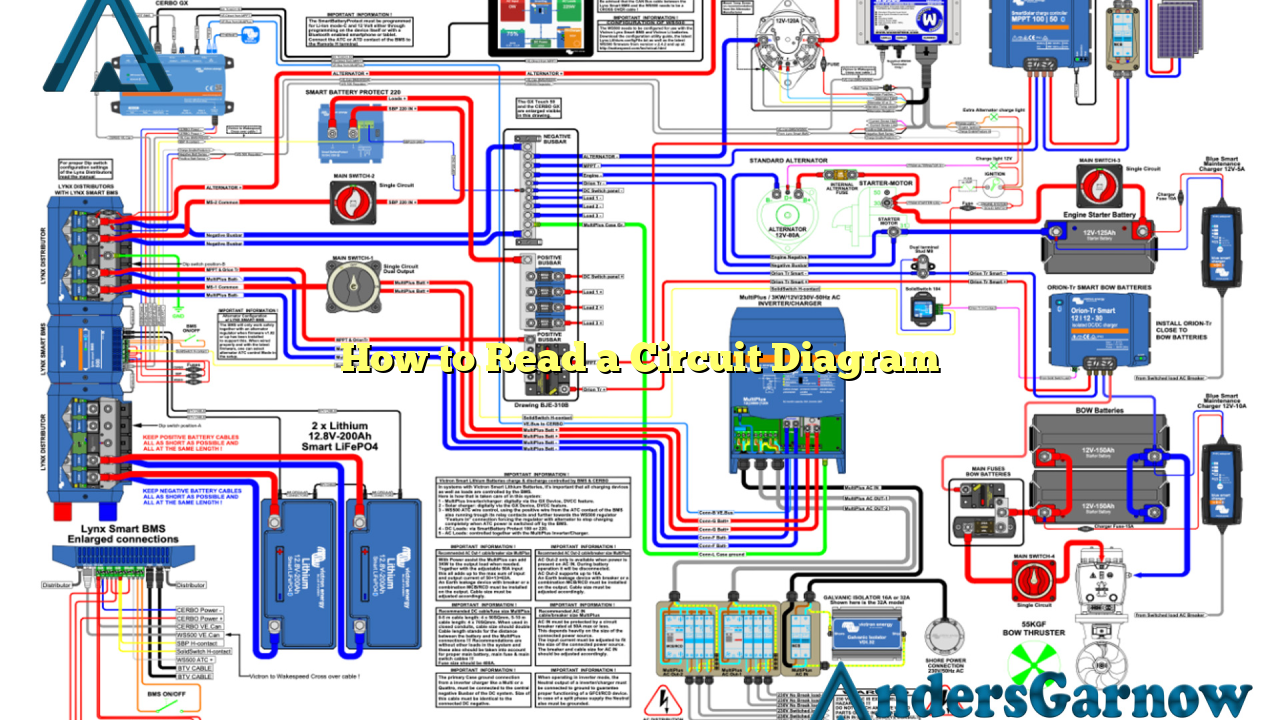Hello readers, welcome to our comprehensive guide on how to read a circuit diagram. In this article, we will explore the intricacies of understanding and deciphering circuit diagrams, which are essential for anyone interested in electronics and electrical engineering.
1. Understanding Basic Symbols
Before diving into the details, it is crucial to familiarize yourself with the basic symbols used in circuit diagrams. These symbols represent various components such as resistors, capacitors, diodes, transistors, and more. Each symbol has a specific meaning and understanding them is the first step towards deciphering a circuit diagram accurately.
Advantages:
| Advantages | Disadvantages |
|---|---|
|
|
Despite a few disadvantages, understanding circuit diagrams is essential for anyone working with electronics or aspiring to become an electrical engineer.
2. Identifying Power Sources
In a circuit diagram, power sources such as batteries or AC power supplies are represented by specific symbols. Identifying these power sources is crucial as they provide the necessary energy to make the circuit operational. Pay attention to the voltage and polarity indicated alongside the symbol to ensure compatibility with other components.
3. Analyzing Connections
The lines connecting various symbols in a circuit diagram represent the electrical connections between components. Understanding how these connections are made is fundamental to interpreting the circuit’s functionality. Follow the lines and analyze their paths to identify series and parallel connections, as well as input and output points.
4. Reading Component Values
Components like resistors, capacitors, and inductors have specific values associated with them. These values, such as resistance in ohms or capacitance in farads, are often marked alongside the component symbol. Pay attention to these values as they determine the behavior of the circuit.
5. Interpreting Component Labels
In addition to values, circuit diagrams often include labels or codes for components. These labels help identify specific components and their functions. Refer to the circuit diagram’s legend or accompanying documentation to understand the meaning behind these labels.
6. Recognizing Component Types
Circuit diagrams provide information about the type of components used in a circuit. Understanding the different types of components, such as resistors, capacitors, diodes, and transistors, is vital for comprehending the circuit’s overall function.
7. Noting Component Pinouts
Many components, such as integrated circuits and transistors, have specific pinouts that indicate the correct orientation and connection points. Pay attention to these pinouts to ensure proper installation and functionality of the circuit.
8. Following Signal Flow
Signal flow is crucial in circuit diagrams as it illustrates the path of electrical signals through the circuit. By following the arrows or lines representing signal flow, one can gain a better understanding of how the circuit functions and how different components interact with each other.
9. Considering Ground and Common Connections
Ground and common connections play a significant role in circuit diagrams. They provide reference points for voltage measurements and help establish a common reference potential for various components. Identifying these connections is essential for accurate circuit analysis.
10. Using Schematic Capture Software
Modern technology has made it easier to read and create circuit diagrams using schematic capture software. These software tools provide an intuitive interface to design, simulate, and analyze circuits. Familiarize yourself with these tools as they can greatly simplify the process of reading and creating circuit diagrams.
Alternative Approach: Step-by-Step Tutorials
If you find circuit diagrams overwhelming, an alternative approach is to follow step-by-step tutorials. Many online resources offer detailed tutorials on building specific circuits, accompanied by circuit diagrams and explanations. By following these tutorials, you can gradually develop an understanding of circuit diagrams while gaining practical experience.
Conclusion
Reading a circuit diagram may seem daunting at first, but with practice and perseverance, it becomes an invaluable skill for anyone interested in electronics. Understanding the symbols, connections, and components allows you to analyze, troubleshoot, and design electrical circuits effectively. So dive into the world of circuit diagrams and unlock endless possibilities in the field of electronics!
FAQ
| Question | Answer |
|---|---|
| Can I read circuit diagrams without any prior knowledge? | While it is possible to grasp the basics without prior knowledge, having a basic understanding of electronics and electrical components greatly helps in reading circuit diagrams. |
| Are there any online resources where I can practice reading circuit diagrams? | Yes, various websites and online tutorials provide circuit diagram exercises and quizzes to improve your skills. |
| Is it necessary to learn circuit diagrams for basic electronic projects? | For simple projects, a basic understanding of circuit diagrams may suffice. However, as projects become more complex, the ability to read circuit diagrams becomes increasingly important. |
We hope this article has provided you with a comprehensive understanding of how to read a circuit diagram. Remember, practice makes perfect, and with time, you’ll become proficient in deciphering even the most complex circuit diagrams.

